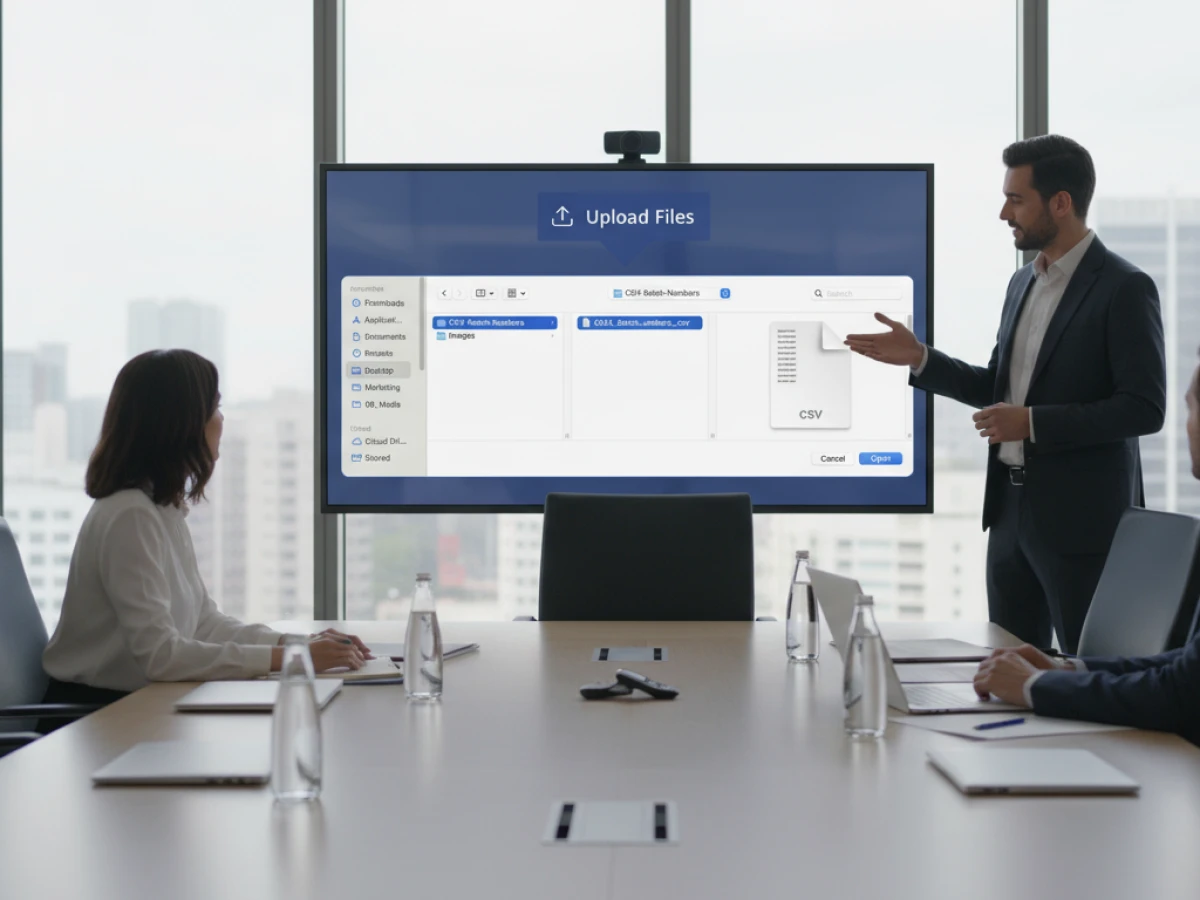Variable Data Printing (VDP) – Personalized Packaging at Scale with packQ

packQ’s Variable Data Printing (VDP) feature transforms static packaging into dynamic, personalized experiences. It connects databases, design templates, and print automation to produce unique boxes, labels, or displays—each tailored with individual names, serials, or codes. Built on the PDF/VT standard, VDP in packQ enables true mass customization: from one-off campaigns to high-volume personalized production, all within a single automated workflow. This article explores how packQ makes personalized packaging scalable, efficient, and production-safe.
The Power of Personalization in Packaging
We live in an era where personalization drives attention, loyalty, and conversion. From coffee cups with your name on them to subscription boxes tailored to your preferences, customization has become an expectation—not a luxury.
In the packaging world, personalization used to mean manual effort, small batches, and high costs. But thanks to digital printing and advanced workflow automation, Variable Data Printing (VDP) has changed everything.
packQ brings this revolution directly into the browser. Its VDP module turns static packaging templates into dynamic data-driven campaigns—producing thousands of unique boxes, labels, or displays, each with individualized content.
Whether you’re printing names for a marketing campaign, serial numbers for traceability, or QR codes for interactive experiences, packQ automates it all—end-to-end.
What Is Variable Data Printing (VDP)?
VDP is a digital printing technique that customizes each printed piece based on data. Instead of printing 10,000 identical boxes, VDP can print 10,000 unique versions—each one personalized with different text, images, or codes.
It’s powered by a template + data model:
- The template defines the design and variable fields.
- The data source (CSV, database, or API) provides values for those fields.
packQ’s VDP system merges both in real time—automatically generating print-ready PDFs or PDF/VT streams, ready for digital presses or large-scale production.
The Evolution of VDP: From Labels to Packaging
Historically, VDP started in direct mail—personalized postcards, letters, or coupons. Over time, it evolved into labels and now into packaging, driven by trends such as:
- Shorter product cycles and micro-segmentation in FMCG.
- Targeted marketing (e.g., Coca-Cola’s “Share a Coke” campaign).
- Smart packaging for supply-chain tracking and consumer engagement.
- On-demand manufacturing for small brands and startups.
packQ extends this principle to folding cartons, corrugated boxes, sleeves, and POS displays—bridging creative flexibility with industrial automation.
How VDP Works in packQ
Template-Based Design
In packQ, a designer defines a variable design template using placeholders (for example: <FIRSTNAME>, <SERIAL>, <QR>). These fields are linked to external data sources.
The template remains static in layout but dynamic in content.
Data Integration
packQ can connect to various data inputs:
- CSV or Excel files uploaded by the user.
- API connections to CRM, ERP, or e-commerce databases.
- Dynamic data streams from online campaigns or order systems.
Each record corresponds to one packaging variant.
Real-Time Merging and Rendering
When data is uploaded, packQ’s engine merges it with the template:
- Text variables replace placeholders.
- Images or barcodes are inserted dynamically.
- Layouts adjust automatically to fit content.
The system then renders all variants as:
- PDF/VT files (industry standard for variable data print streams).
- Individual PDFs for smaller runs or proofs.
.webp)
Production Automation
Once approved, the output flows directly into the print queue. Because packQ supports the PDF/VT standard, each variant is optimized for fast RIP (Raster Image Processing) on digital presses such as HP Indigo, Xerox, or Konica Minolta.
That means no delays, no manual prepress, and no separate file handling for each version.
Real-World Examples of VDP in Action
Personalized Gift Boxes
A chocolate brand launches a holiday campaign: every customer can order a box printed with their name.
packQ generates thousands of individualized boxes automatically—each personalized with different names and messages—without manual setup.
Serialized Pharma Packaging
A pharmaceutical producer uses packQ to generate boxes with unique serial numbers and QR codes for tracking.
The VDP module connects to the company’s ERP system, ensuring that every code is unique and traceable.
QR-Enabled Promotions
An energy drink brand prints unique QR codes on every carton linking to a prize draw.
packQ automatically generates and assigns those codes, ensuring data integrity across all 3D packaging models.
Multilingual Campaigns
A cosmetics company runs a Europe-wide campaign with product boxes printed in 12 languages.
Using a single packQ template and a multilingual data set, the system outputs language-specific variants—no separate artwork files required.
Why PDF/VT Matters
PDF/VT is the international standard (ISO 16612-2) for variable data printing. It allows high-speed rendering of personalized documents and packaging on digital presses.
packQ’s VDP Engine Fully Supports PDF/VT
- Streamlined Output: All versions contained within one file.
- High Performance: Fast RIP times for thousands of records.
- Metadata Control: Each record tagged with unique identifiers.
- Error Reduction: No missing or duplicate entries.
- Compatibility: Works with any modern digital press workflow.
By using PDF/VT, packQ ensures that variable print jobs are not only fast—but also production-proof.
Automation from Start to Finish
VDP in packQ isn’t a separate tool—it’s part of a connected ecosystem.
That means automation extends beyond printing into every stage of the packaging workflow:
- Data Import: CSV or API input triggers job creation.
- Dynamic Preflight Check: Ensures fonts, colors, and images meet print specs.
- 3D Visualization: Every variant can be previewed in real time before production.
- Pricing & Quoting: Cost calculated dynamically based on quantity and complexity.
- Batch Production: Files grouped intelligently for print and finishing.
- Reporting: Output summary with all variables, serials, and assets archived.
The result: a completely touchless workflow—from personalization to finished product.
The Business Benefits of Variable Data Printing
For Printers & Converters
- New Revenue Streams: Offer personalized packaging as a premium service.
- Operational Efficiency: Handle micro-runs with the same workflow as mass production.
- Higher Equipment Utilization: Keep digital presses running continuously with small-batch jobs.
- Error Reduction: Automated data management minimizes misprints or duplication.
For Brand Owners
- Customer Engagement: Personalization increases response and retention.
- Data-Driven Marketing: Integrate campaigns with CRM and analytics.
- Faster Time-to-Market: Launch personalized campaigns in days, not weeks.
- Sustainability: Print only what’s needed, reducing waste and inventory.
For E-Commerce Platforms
- Seamless Integration: Connect online orders directly to VDP workflows.
- Scalability: Generate one-off or large-scale personalized packages effortlessly.
- Enhanced Brand Perception: Unique packaging differentiates your sellers.
- Automation: No manual intervention from data to delivery.
The Role of AI in Personalization
AI plays an increasingly important role in VDP—especially in optimizing design placement, data handling, and visual layout.
packQ uses AI-driven logic to:
- Predict text overflow and automatically resize fonts.
- Adjust contrast to ensure legibility for each data variation.
- Generate previews faster by caching shared assets across variants.
- Detect anomalies (e.g., duplicate serials or missing images).
This intelligence turns what used to be a fragile manual process into a robust automated system capable of generating millions of unique outputs confidently.
Scalability: From One to a Million
VDP in packQ scales effortlessly:
- For micro-campaigns, it generates on-demand variants in the browser.
- For enterprise runs, it produces full PDF/VT streams ready for industrial print servers.
The platform’s cloud-native architecture ensures that even massive datasets can be processed quickly and securely, whether for marketing, logistics, or manufacturing purposes.
Real-Time Preview: Visualizing Personalization
packQ integrates its 3D Packaging Designer with VDP so users can visualize variable fields live:
- See different names or barcodes appear on the box in real time.
- Rotate and inspect the personalized design in 3D before printing.
- Validate alignment and color consistency across multiple variants.
This visual verification eliminates uncertainty and ensures 100 % accuracy before production.
Compliance & Data Security
Handling variable data means handling sensitive information. packQ ensures compliance with modern data protection standards:
- GDPR-ready architecture for all EU customers.
- Secure data upload and encryption during processing.
- Automatic deletion of data after job completion.
- Audit logs for traceability and accountability.
By design, packQ treats personalization with the same care as enterprise data management.

Marketing Meets Manufacturing: A New Era of Connected Packaging
With VDP, packaging becomes more than just a container—it becomes a communication channel.
By linking variable print data with digital touchpoints, brands can create connected packaging:
- QR codes leading to personalized landing pages.
- Serialized IDs linked to loyalty programs or product authenticity checks.
- Augmented reality (AR) triggers for immersive brand experiences.
packQ enables these hybrid campaigns at industrial scale—bridging marketing creativity with production automation.
Quantifiable Results
MetricTraditional WorkflowWith packQ VDPPersonalization setup time1–2 days< 15 minutesData merge errors~10 %< 0.5 %Campaign launch lead time2–3 weeks< 48 hoursCost per unique packageHighScalable & optimizedCustomer engagementModerate+30–60 % increase
These results show how automation and standardization transform personalization from a costly experiment into a profitable strategy.
Future Outlook: Smart Personalization
The future of VDP in packQ goes beyond printing—it’s about smart, data-driven packaging.
Upcoming developments include:
- AI-generated variable design themes adapting to demographics or location.
- Predictive printing that forecasts demand based on campaign data.
- Integration with IoT packaging sensors for real-time traceability.
- Dynamic pricing automation for personalized e-commerce orders.
packQ’s roadmap is clear: to make personalization not just possible, but automatic and intelligent.
Key Takeaways
- VDP in packQ automates mass personalization across packaging, labels, and displays.
- Built on PDF/VT, it guarantees speed, accuracy, and compatibility with digital presses.
- Users can connect data sources, design templates, and preview variants—all in the browser.
- AI ensures efficiency, detecting errors, resizing layouts, and optimizing performance.
- The result: scalable personalization that’s creative, secure, and production-ready.
Personalization Without Limits
Personalization is no longer a marketing buzzword—it’s a production reality.
With Variable Data Printing, packQ transforms static packaging into dynamic, individualized experiences. Whether producing 10 or 10 million boxes, each one can be unique, traceable, and visually stunning.
By combining automation, AI, and the global PDF/VT standard, packQ makes personalized packaging fast, affordable, and reliable—a true enabler of the Web-to-Pack era.
One template. Infinite variations. Unlimited potential. That’s Variable Data Printing in packQ.


.webp)


